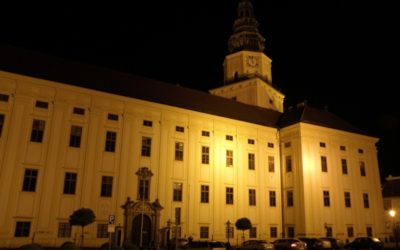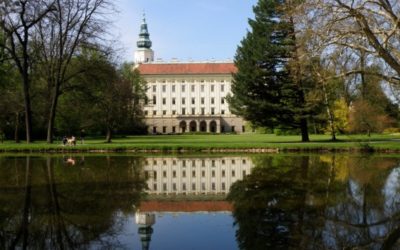The archbishop’s chateau stands on the site of the original Romanesque courtyard, which was rebuilt into a Gothic castle at the end of the 13th century. It became the residence of the bishops of Olomouc and the center of the Manx organization. At the beginning of the 16th century, Bishop Stanislav Thurzo began to modify the castle. These modifications were partly late Gothic, partly already Renaissance. During the Thirty Years’ War in 1643 and 1645, the castle was destroyed by Swedish troops and a magnificent early Baroque palace was built in its place by the decision of Bishop Charles of Lichtenstein. The castle was designed by the architects of the Viennese imperial court, Filiberto Lucchese and Giovanni Pietro Tencalla. The castle became the crown of the city, which gained a princely appearance. However, in 1752 a fire engulfed the town and part of it the castle fell through. After the building repairs, a new artistic decoration was made, especially on the second floor of the castle, which was the most damaged.
The chateau library is one of the most valuable historical book collections in the Czech Republic. In 2001, it numbered 90,846 volumes, contained 304 manuscripts, and 180 first editions. About 20,000 old prints date back to 1800 and 1,178 prints are from the 16th century. The chateau picture gallery in 9 halls was newly rebuilt and opened in 1999. Due to its affinity with the collections of the French kings in the Louvre, the gallery is one of the leading in Europe and is also the second most important in our country after the National Gallery in Prague. There are paintings from Gothic to Baroque. The most famous painting is Apollo and Marsyas, who painted Titian as one of his most masterpieces.
The music archive is also one of the most important collections in the Czech Republic. It contains a number of otherwise unpreserved works by composers of the 17th and 18th centuries. The leader of the bishop’s band, field trumpeter P. J. Vejvanovský, is represented by 130 compositions. Composers such as W. A. Mozart, J. Haydn, K. Dittersdorf, and the work of Archduke Rudolf Jan (corrected by L. van Beethoven) are also represented in the collection compiled by Professor J. Sehnal.


